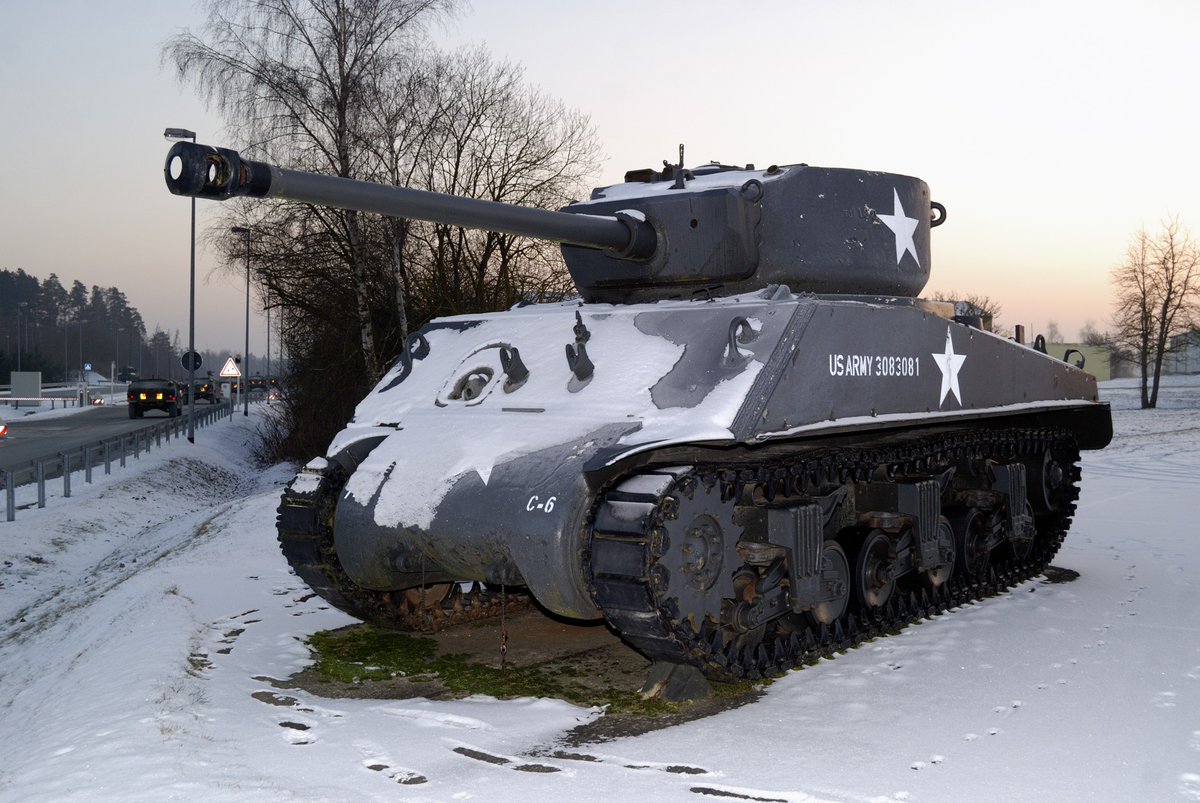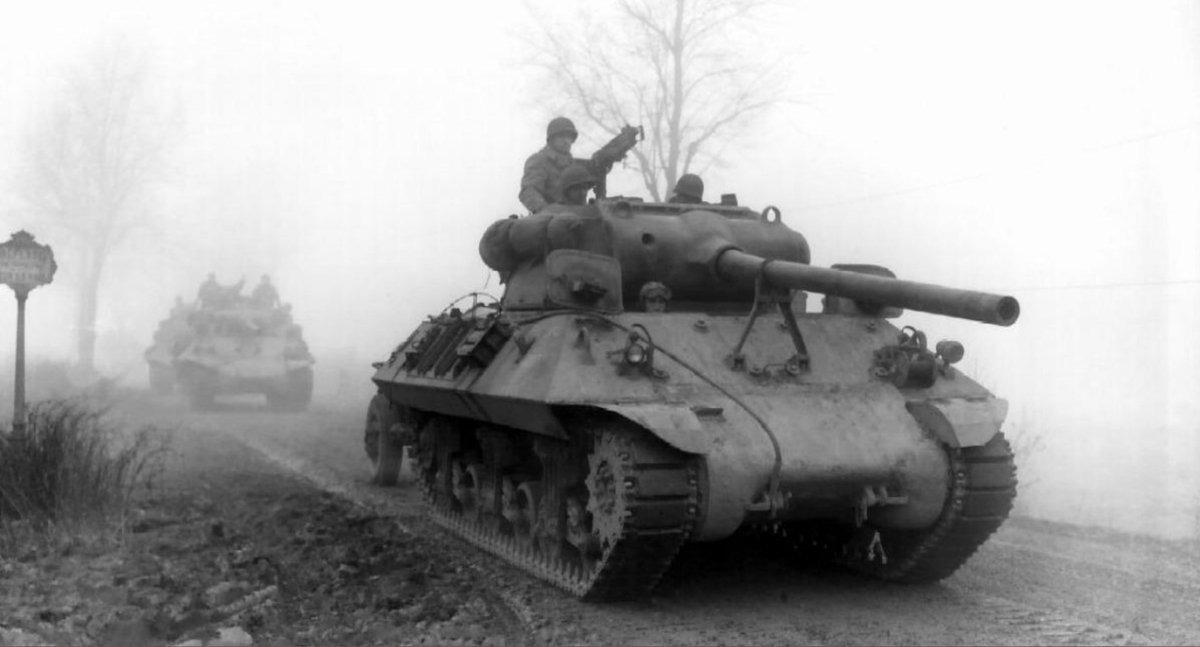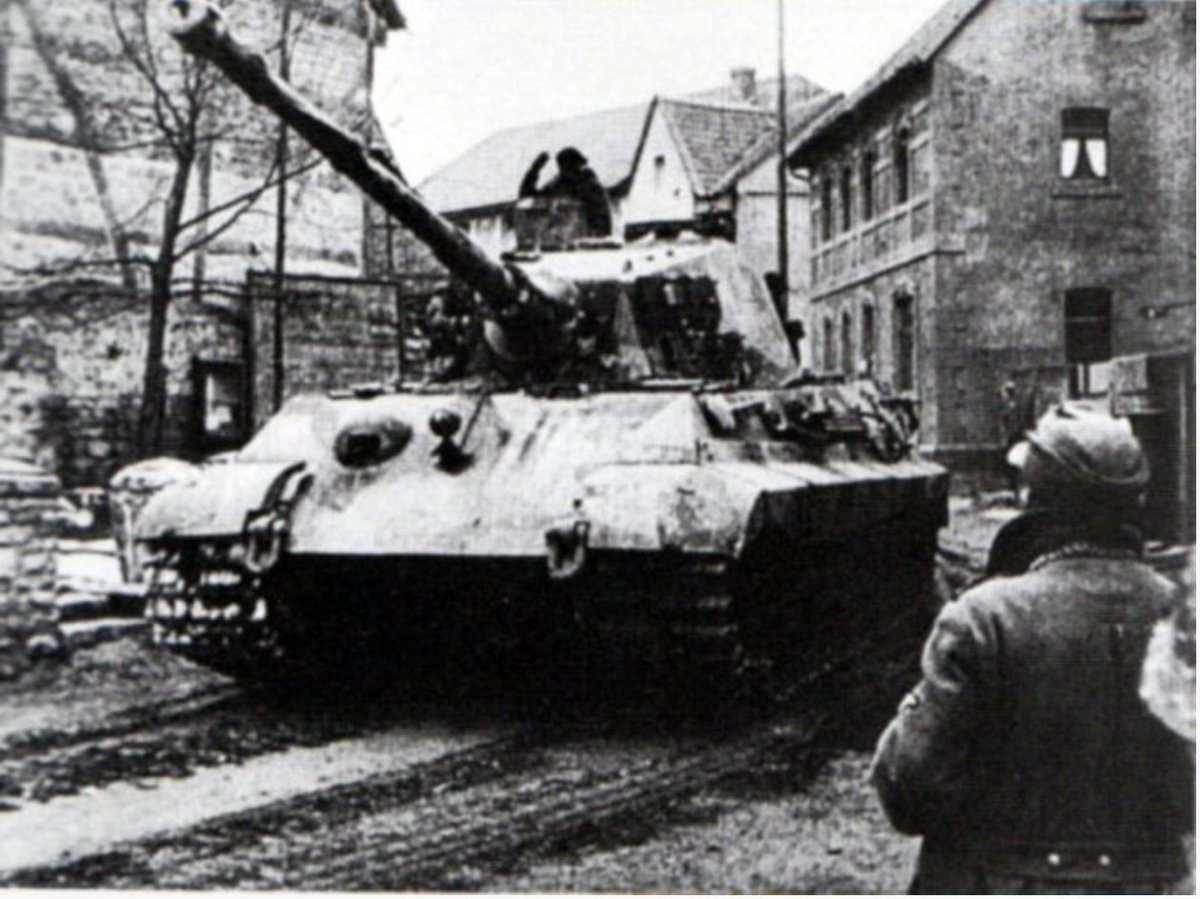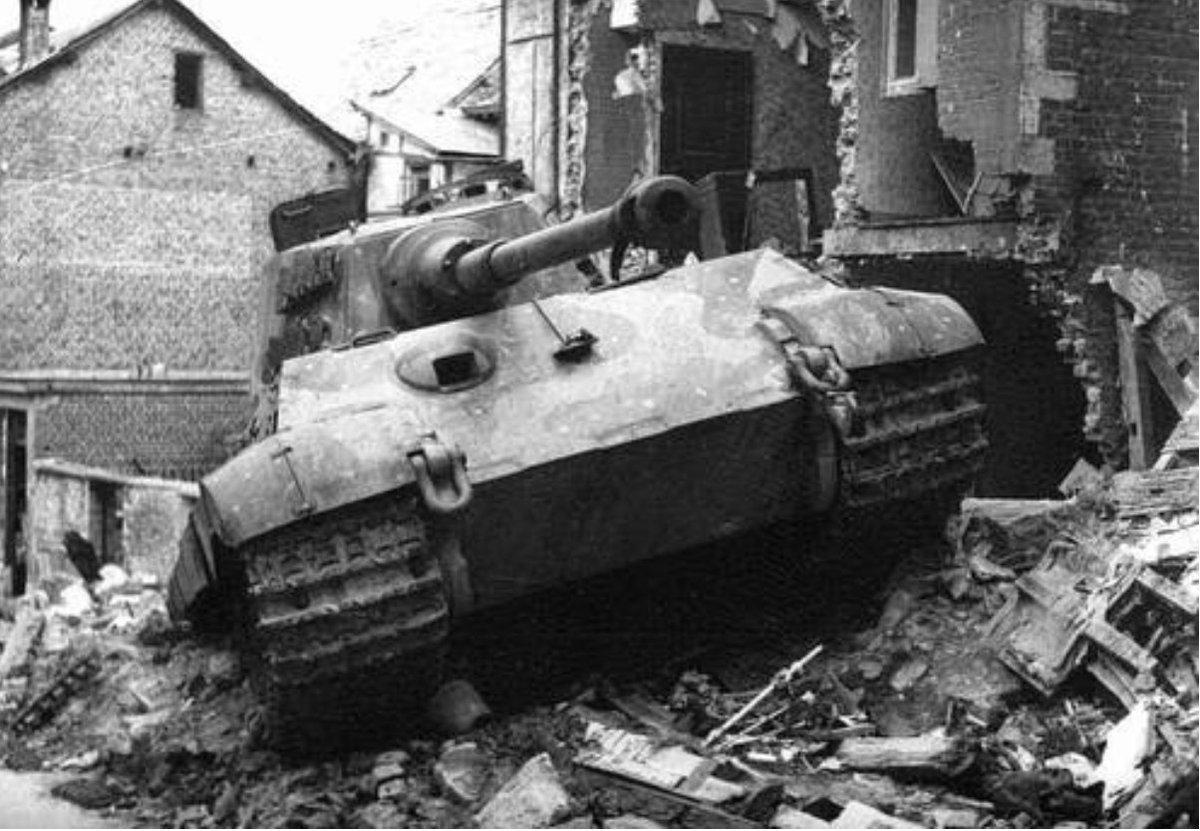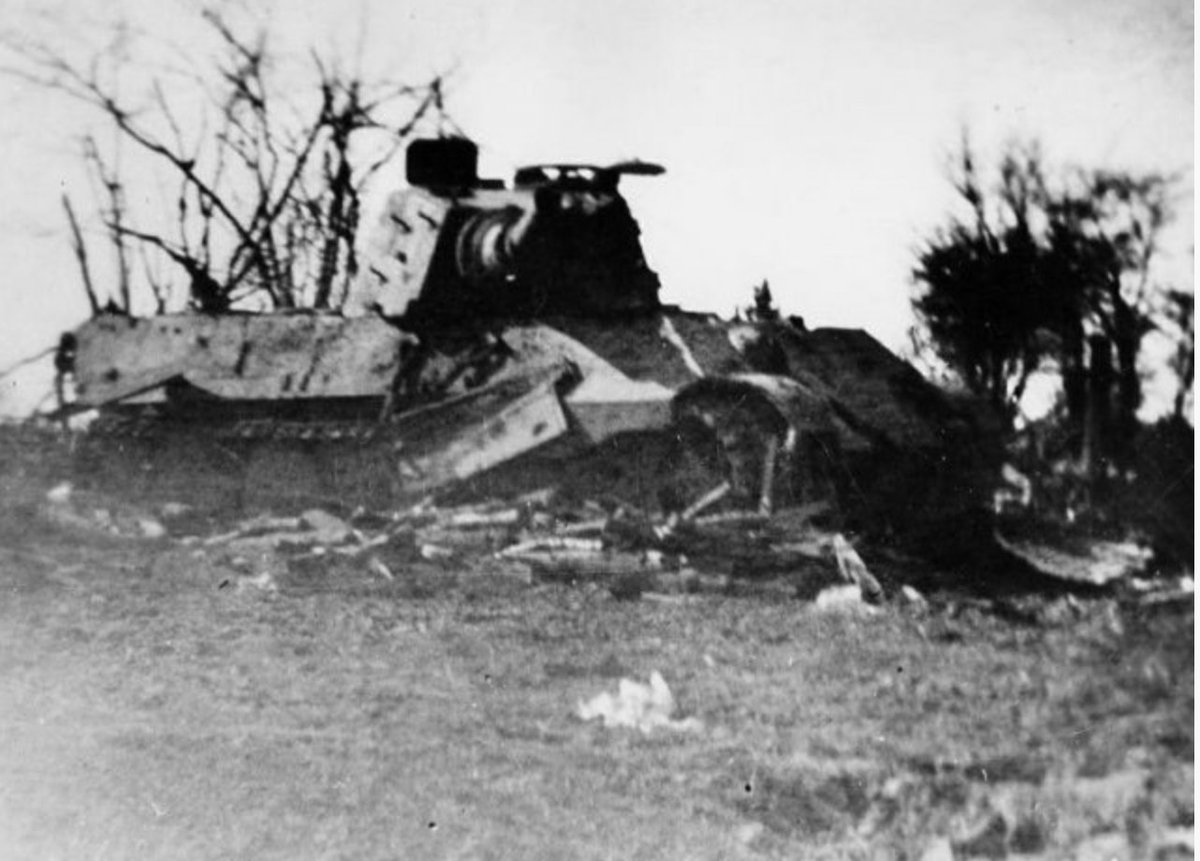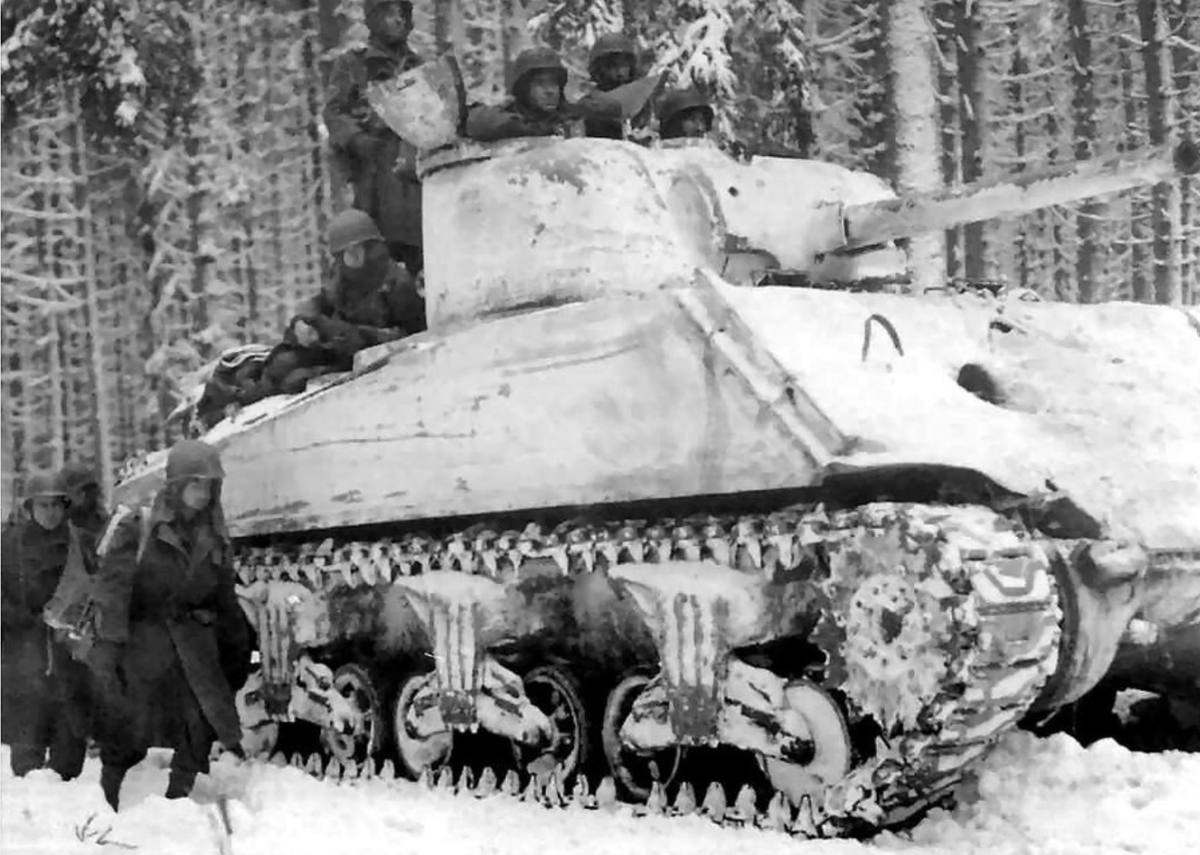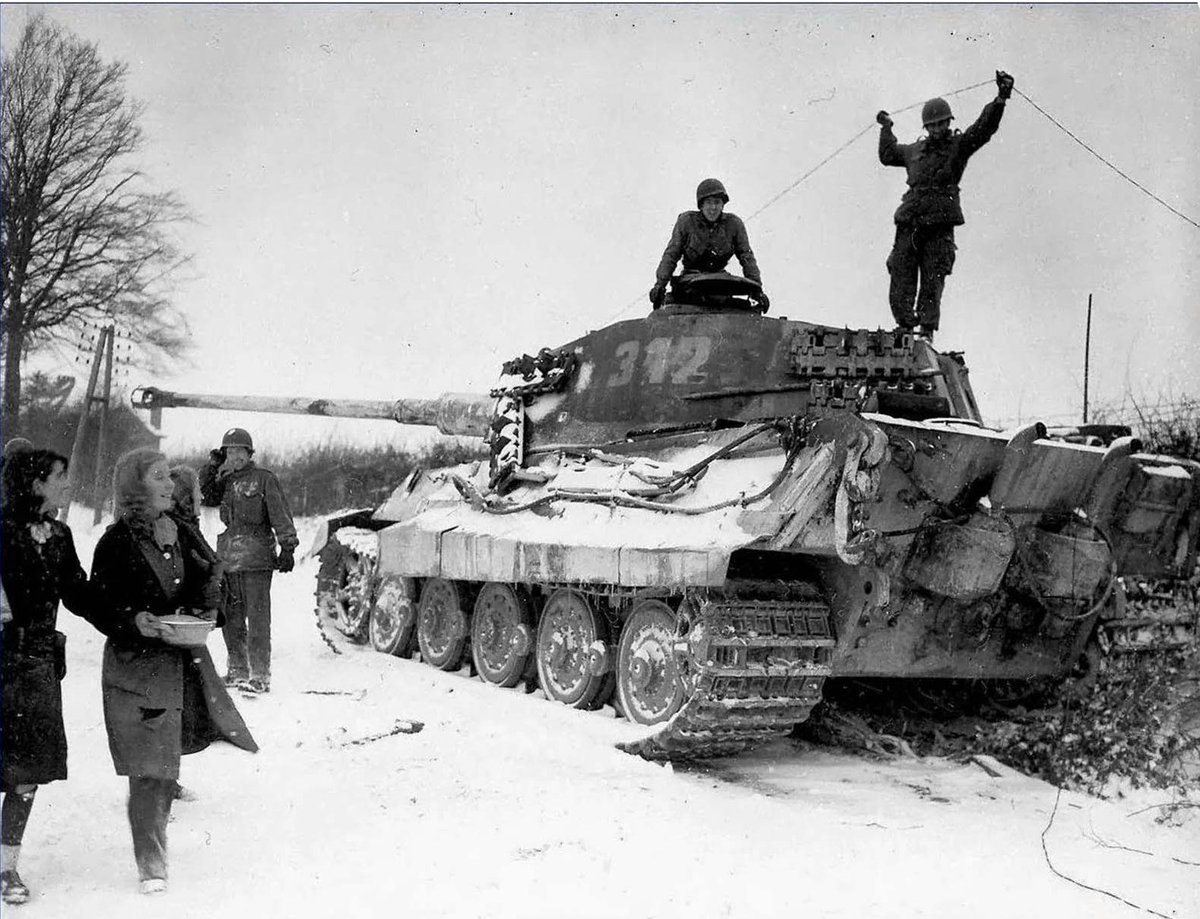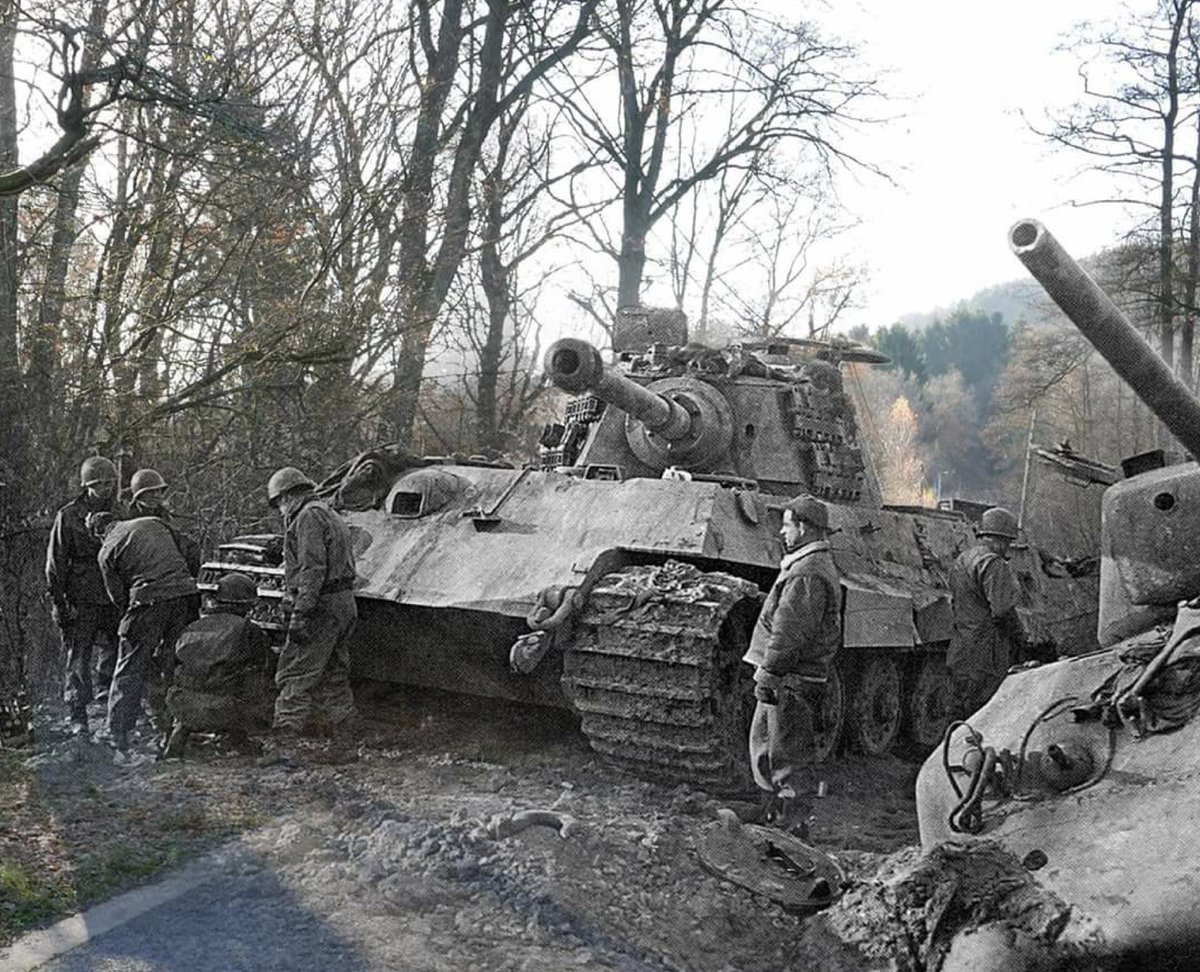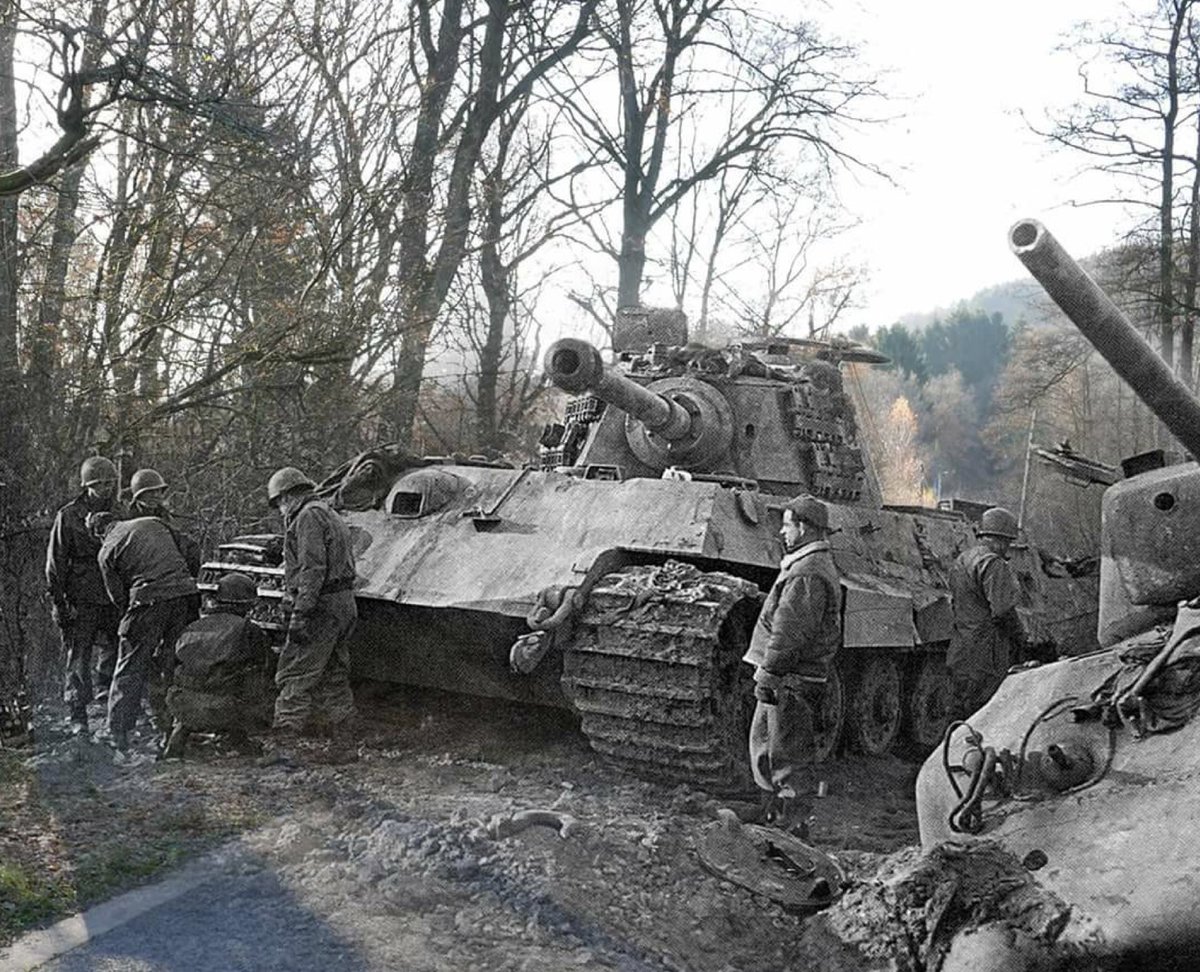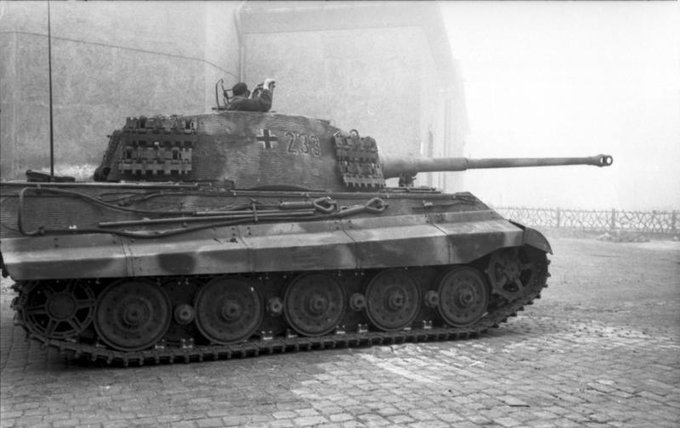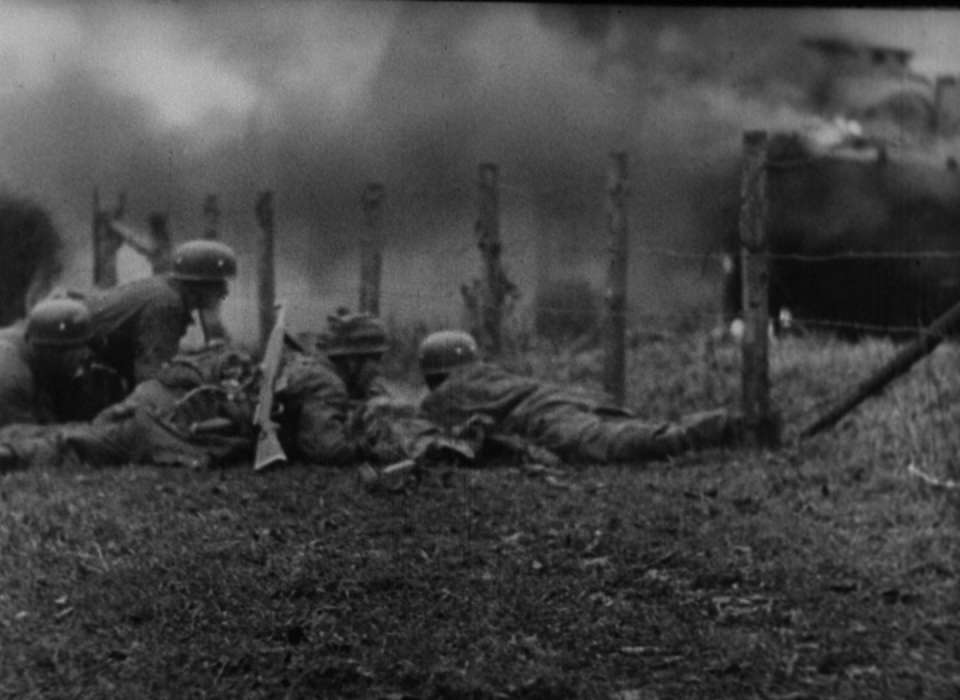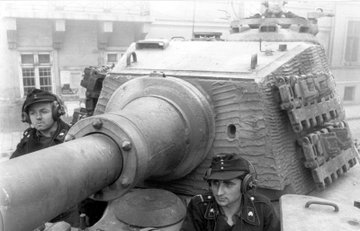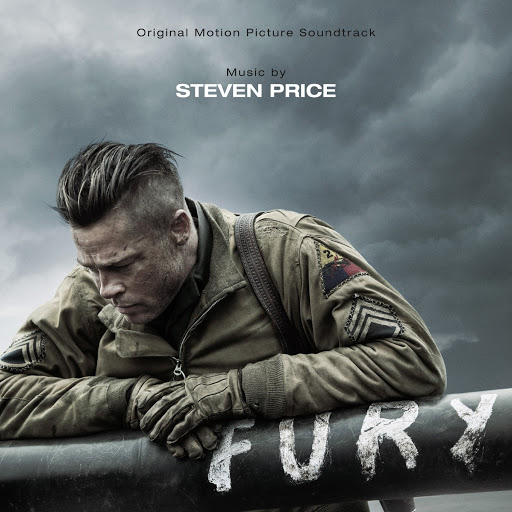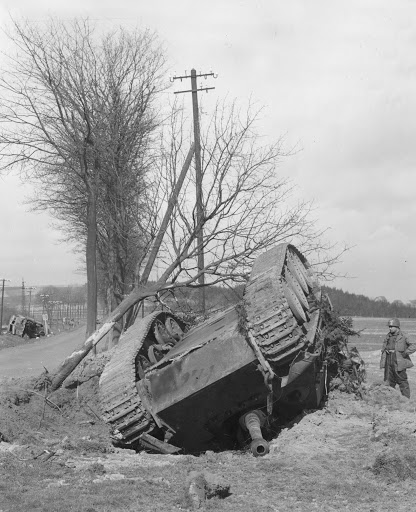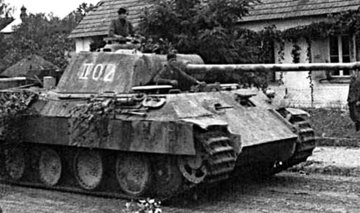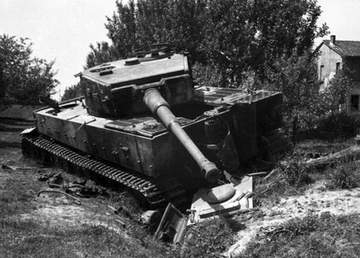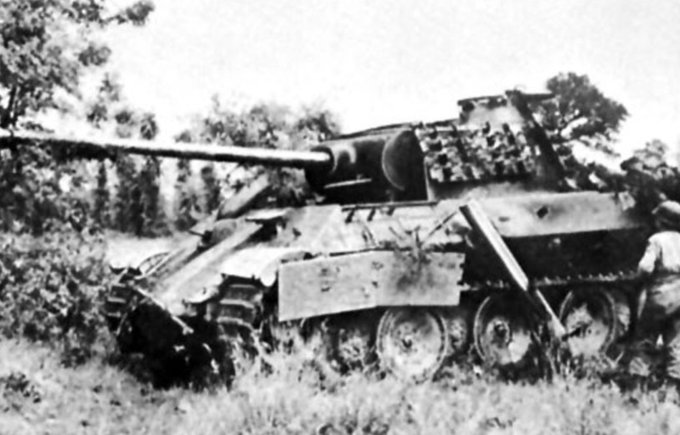2 of 19:
After the war, a narrative developed that American tank units (7th, 9th, 10th Armored Divisions, in particular) overcame a German tank superiority in the Battle of the Battle.
[3 of 19] We'd like to put that idea to the test.
We've discussed Kampfgruppe Peiper outmaneuvering our tanks early on with the newest German tank, the 70-ton Tiger II.
The remaining German forces had the Tiger I and Panzers.
[4 of 19]
Lt. Colonel Robert Erlenbusch commanded company A, 31st Tank Battalion in St. Vith during the fighting. After the war, he wrote a paper for III Corps in which he stated that German Panther and Tiger tanks were far superior to the American Sherman and Stuart tanks.
[5 of 19]
American tanks had success in Ardennes only if they hit "lucky shots" according to Erlenbusch. Many historians still reference Erlenbusch's findings.
[6 of 19]
But, while the Tiger tank had a better gun (88m) and better armor than ours, our Sherman tanks may have actually had superior combat performance in the Ardennes for offensive operations.
Why do we say that? Well, 4 points here.
Ready? Let's get into 'em.
[7 of 19]
Point 1: the German Tiger I and II, the new tanks Peiper rolled out, were "maintenance dogs." They broke down all the time!
[8 of 19]
It didn't help that Germans put their newest, least experienced troops in their newest tanks & that the Tiger II was very difficult to recover, often taking 1 or 3 recovery vehicles to move each tan
[9 of 19]
Point 2: the Tigers were fuel hogs. ANY army would have had trouble keeping a tank force that size refueled with those gas guzzlers. Tiger II tanks consumed two gallons per mile!
[10 of 19]
Point 2: the Tigers were fuel hogs. ANY army would have had trouble keeping a tank force that size refueled with those gas guzzlers. Tiger II tanks consumed two gallons per mile!
[11 of 19]
Still Point 2: Look, there is a reason Nazi loser group Kampfgruppe Peiper withdrew on foot. They had no gas and their tanks were broken!
[12 of 19]
Point 3: the German tanks had a slow-turning power traverse turret (slow due to the heavy weight of the turret) while the lighter Shermans' power traverse turret moved easy and quickly.
[13 of 19]
Still Point 3: In a tank-on-tank fight, the lighter American tanks were just much faster. (Take a look at the 2014 movie "Fury" starring the super-handsome Brad Pitt & you'll see what we mean)
[14 of 19]
Point 4: We had better mobility (many will debate us here). Remember the Rick Atkinson line: "In battle, topography is fate." The Germans were trying to cross Class 20 bridges over bad/narrow Belgium roads with 70-ton tanks. Bridges collapsed, tanks flipped, got stuck
[15 of 19] Point 4 cont: Many German tankers preferred the lighter Mark V Panther medium tank as it was light enough to drive off-road while the heavier Tigers were restricted to roads and heavy bridges, making them easy targets for anti-tank teams and eventually Allied airpower.
[16 of 19]
Many historians are enamored with the Tiger and Panzer tank. But, we had better mobility & better reach (less fuel required).
Also, if you hit a Tiger tank on the side or even better in the rear, you could kill it.
[17 of 19]
Having a heavy tank is great, but if it doesn't work when your track brakes and you now have an expensive pillbox with poorly trained infantry inside.
[18 of 19]
So that's it. That's the story.
Part of this is a naked attempt to appeal to the rest of #TankTwitter and engender support for our history threads.
But mostly this is thoughtful analysis and research.
[END]
So, over to the self-crowned heavyweight champions of #TankTwitter,
@PatDonahoeArmy, @Mother_of_Tanks, @TomHeartsTanks, and
@TradocDCG [please tag all the others we don't know about]. What do you think about all this? What do you have for the people?
